

BSABlue Stream Academy’s Healthcare & Lifestyle Magazine Winter 2022 | Issue 16 Today Eco-Friendly Festivities Care Home Customer Relationships Chris Guest Look Who’s Talking: Hygge: Finding Joy in Everyday Living this Winter Flu Season: Vaccine Myths Debunked Winter Wellness + Dr Toni Hazell
BSA Today is the exciting healthcare & lifestyle magazine from Blue Stream Academy - the UK’s leading provider of online training for GP Practices, Nursing & Care Homes, Hospices, Urgent and Tailored Care Centres and Aesthetic Clinics.


Our mission is to standardise healthcare training to ensure consistent delivery of quality care through better staff education, learning and development.
Providing over 100 hours of CPD-certified eLearning, Blue Stream Academy’s suite of interactive training modules is easy to use, cost-effective and in line with CQC guidelines.
If you have any comments, suggestions or ideas for future articles, please feel free to contact our editor, Brady Braddock, by email: brady@bluestreamacademy.com
Alternatively, you can write to us, phone us, or visit our website:
Blue Stream Academy Suites 11, 12, 15 & 16
Riverside Business Centre Foundry Lane Milford Derbyshire DE56 0RN
01773 822549
bluestreamacademy.com
Disclaimer:
The views and opinions expressed within this publication are that of the original content authors and do not necessarily reflect the official views and opinions of Blue Stream Academy Ltd.
© 2022 Blue Stream Academy 02 BSA Today Issue 16 Front Cover
a Friend! Blue Stream Academy's refer-a-friend scheme is back, and this time it's bigger than ever! Here at Blue Stream Academy, we believe that all good things should be shared, so why not share your Blue Stream experience with a friend? If they take out a new Blue Stream Academy eLearning subscription, we'll send you £50 in cash, or a £50 gift card of your choice!* It’s as simple as that. *T&Cs apply. Please see website for details. For more information, please contact our team today: 01773 822549 info@bluestreamacademy.com
Refer
In


From the Editor's Desk...
When you think about winter, what do you love most? Crisp morning walks? Cosy nights in, binge-watching your favourite box sets? How about the arrival of the Winter Wellness edition of BSA Today?
As 2022 draws to a close, it’s safe to say it’s been a year in which we’ve seen some monumental changes throughout the UK’s health and care sector. One thing remains the same, though: You don’t get back the time you’ve spent. So, we think it’s important to take a moment to reflect, enjoy and appreciate the magic of winter.


For many though, the festive season can be stressful, especially for those working in health and care. That’s why in this issue of BSA Today we’ve included plenty of content to help fend off those winter blues and brighten up your coffee break.






Alongside promoting training and education, we’ve advocated wellbeing in the workplace and beyond from the get-go, publishing thoughtful and passionate articles on a wide variety of wellness-inspired topics. Incentivised wellness is key to better health and care outcomes across the board, and this isn’t exclusive to patients – it involves us all.
So, be well this winter, and start the day as you mean to go on. In a world full of cliches, this still seems like sound advice for a bright future – if observed with good intentions, of course.
On behalf of the team here at Blue Stream Academy, we hope you enjoy reading this issue!
03 www.bluestreamacademy.com
BSA Today | Issue 16
this issue
Brady Brady Braddock BSA Today Editor Our Team EDITORIAL Brady Braddock | Editor Alex Burnell | Content Development Stuart Walsh | Information Security ART & DESIGN Courteney Barlow-Ferguson | Graphic Designer Craig Goodall | Creative Services COMMUNICATIONS Abi Bowler | Marketing & Media Caitlin Wood | Marketing Assistant Expert Panel Meet the experts who have contributed their knowledge and insight into this issue of BSA Today
Chris Guest
Customer
Relationships Manager at Blenheim House Care Home
Bethany Cooper Health Sciences/Medical Writer & Emergency Nurse
Dr Toni Hazell
GP, Freelance Medical Writer, Blogger and Editor
Cover Stories
13 Flu Season: Vaccine Myths Debunked

This year, the flu vaccination is being offered to all those aged over 50, as well as younger adults who have medical conditions, and some children. In this article, Dr Hazell discusses some of the practical issues that can come up when running a flu clinic and how to deal with them.
16 Hygge: Finding Joy in Everyday Living this Winter

We think that everyone could benefit from a bit of cosiness and comfort this festive season. In the first feature in our Winter Wellness bundle, we look at hygge (pronounced “hyoo-guh”), a Danish phenomenon that embodies these warm feelings.
18 Eco-friendly Festivities
Environmental sustainability is important regardless of the time of year. In our second Winter Wellness feature, we share our top tips for an eco-friendly festive season.
All Things Blue Stream
06 Eye on Healthcare
Showcasing cutting-edge academic content from The Conversation, we keep you up to date with our chosen hot topics from across health and care, written by professionals who share a passion for reporting on the issues that matter most.
20 Datawatch:
Cover Your Assets
Stuart Walsh, Blue Stream Academy’s Chief Information Security Officer (CISO), provides guidance from the National Cyber Security Centre (NCSC) to explain the importance of asset management and outlines the practices needed to achieve good cyber security outcomes.

30 @BlueStreamNews
As we head towards the end of 2022, we recap the last few months at Blue Stream Academy and talk news and events with #TeamBSA.

31
LiveChat Lounge
We check in with Blue Stream Academy’s friendly support team to hear what our customers have to say about our suite of interactive training modules and Management of Information System (MIS).
04
20
06
13
Lifestyle & Wellness
24 Wellness Workshop: The ‘Sunshine Vitamin’
In the winter months, when sunshine is scarce, we need to think more about our vitamin D levels. In this issue’s Wellness Workshop, we look at vitamin D – the ‘sunshine vitamin’ – and why it’s so important to our overall health and wellbeing.

26 Emojis: What Are We Really Saying?

We all love a good emoji! Emojis allow us to convey our thoughts and feelings when text alone just won’t cut it. Here, we look at some of the hidden meanings behind these adorable little characters.

28 Food, Glorious Food!


Food is at its most glorious at this time of year! Turn to our fabulous recipes section for mouth-watering bakes that are perfect for sharing with friends and family.
Look Who’s Talking


Care Home Customer Relationships
In the latest of our ever-popular Look Who’s Talking series, Chris Guest, Customer Relationships Manager (CRM) at Blenheim House Care Home, discusses his exciting new role and what the role means for residents and the wider community.
www.bluestreamacademy.com 05 28
09
24 18
26
Four Ways to Reduce Your Household Energy Use – Proven by Research

Aparticularly cold September has given us a glimpse of the winter to come. The cold will bite hardest for the 13%[1] of England’s households that are already in fuel poverty. As the energy crisis intensifies, this is expected to rise further.
European leaders have therefore rushed to implement measures to protect households. The UK’s Energy Price Guarantee[2] caps the
unit price of electricity and gas at 34p and 10p respectively. While this will ease some concerns over rising energy bills, many households will still be priced out of warming their home in the coming months.
So here are four ways research indicates households can reduce their energy use in time for the winter – and save money in the process.


1. Air Dry Laundry Washing and drying clothing is responsible for around 12%[3] of household electricity use in the UK.
Hand washing is frequently suggested as an energy-saving alternative to machine washing.
Yet modern washing machines are highly efficient, typically using 0.5 kilowatt hours[4] for a 9 kg wash. This is considerably less than the 0.82 kilowatt hours[5] used on average by hand washing.
Even inefficient washing machines tend to use less energy than hand washing as much less hot water is required.
By instead restricting use of the tumble dryer, greater reductions in energy use can be achieved.
Many households are already feeling the effects of rising energy prices.
06
Tumble dryers use a lot of energy[6] with a single cycle using up to 4.5 kilowatt hours. This will cost £1.50 per cycle at the price cap.
By air drying laundry instead, I calculated that the average household could save over £130 a year.
2. Use Less Hot Water
Facing critical gas shortages, the German city of Hanover turned off the hot water[7] in the bathrooms of all public buildings earlier this year.
While energy-saving measures this severe are unlikely, hot water production in the UK is a major consumer of energy, accounting for roughly one quarter[8] of household energy use. There are several ways households can reduce their hot water use.

One way is reducing the time spent in the shower. A high-pressure shower lasting nine minutes uses around 4.3 kilowatt hours[9] of gas. At the price cap, this will cost households 44p per shower.
By reducing the time spent showering to six minutes, households can save 15p on heating water for each shower.
If you have a hot water tank, making sure it is well insulated can also deliver cost savings. This will keep water warmer for longer and reduce heating costs.

Another approach is to install a low-flow shower head. This restricts the flow of water while maintaining the feel of a high-pressure shower. At lower flow rates, a shower will consume less hot water.
For households that average two nine-minute showers a day, this could save over £100 per year.
However, a low-flow shower head will only work well in areas where the water pressure is already sufficiently high.
Reducing the flow of an already lowpressure shower would transform the shower into a dribble.
3. Make Better Use of Heating
As the energy crisis intensifies, it is important to make sure heating is not wasted unnecessarily. Research[10] indicates that energy use could be slashed by up to 30% by reducing heating when occupants are asleep or away.
This can be done by manually dialling down the thermostat or by turning the heating off altogether. For those who habitually forget to lower the heating, a smart thermostat could prove a useful investment.
on Page 08
Julien Lecturer in Environment, Energy and Resources, UCL
The original article can be found at: https://theconversation.com/four-waysto-reduce-your-household-energy-useproven-by-research-191794
www.bluestreamacademy.com 07
Aurore
Author
Hand washing laundry is often touted as an energy saving alternative to machine washing.
Continued
Homes with heating controls use much less energy than homes without.
These can be controlled remotely via your mobile, or automatically through presence sensors and allow heating to be lowered when the home is unoccupied.
Energy is also wasted by heating unused rooms. Thermostatic radiator valves are one way to control the temperature across different rooms. They regulate the flow of hot water through radiators and can be programmed to modulate the temperature for each room.[11]
Thermostatic radiator valves can deliver substantial energy savings. One study found that they result in 10%–18%[12] less energy use compared to homes with no heating controls. However, it is important that the doors between rooms remain closed to prevent energy being wasted.

4. Maximise Insulation
Although we can make better use of heating, Britain’s homes are hugely energy inefficient. Its housing stock is one of the least insulated[13] in Europe.
Maximising your insulation is one way to reduce your energy use. Secondary glazing in the form of window shutters can halve[14] the amount of heat lost through a single glazed window. I calculated that this could save the average UK home over £50 per year in heating costs.
But window shutters do not always represent an immediate energy-saving strategy. Shutter installation can be costly and if installed on a building’s exterior may require planning permission.
Closing blinds or curtains at night and during cold spells instead represents a cheaper way of retaining heat. Research indicates that blinds can reduce the amount of heat lost through windows by up to 38%.[15]
Changes in habits and small investments can substantially reduce energy consumption. If widely implemented, they can ease the energy crisis.[16]
While the Energy Price Guarantee will provide temporary relief to many, investment in energy efficiency measures such as insulation must be prioritised to reduce our energy burden longer term
accessed October 2022) 14. Baker D. (2008). Technical Paper 1 – Thermal Performance of Traditional Windows Glasgow: Historic Environment Scotland. https://issuu.com/hspubs/docs/technical-paper-1---thermal-performance-of-traditi (Last accessed October 2022) 15. Shahid H, Naylor D. Energy Performance Assessment of a Window With a Horizontal Venetian Blind. Energ Buildings 2005; 37(8):836–43. https://doi.org/10.1016/j.enbuild.2004.11.008
16. Julien A. (2022). Turning Down Your Thermostat Really Can Ease a Gas Supply Crisis – Here’s How. The Conversation 10 March. https://theconversation.com/turning-down-your-thermostat-really-can-ease-a-gas-supply-crisis-heres-how-178915 (Last accessed October 2022)
Continued
Page 07 08 1. Hinson S, Bolton P, Kennedy S. (2022). Fuel Poverty in the UK. [research briefing]. House of Commons Library. https://commonslibrary.parliament.uk/research-briefings/cbp-8730 (Last accessed October 2022) 2. GOV.UK. (2022). Energy Bills Support Factsheet. www.gov.uk/government/publications/energy-bills-support/energy-bills-support-factsheet-8-september-2022 3. GOV.UK. (2014). Household Electricity Survey. www.gov.uk/government/publications/household-electricity-survey--2 (Last accessed October 2022) 4. Is it Better to Wash Your Clothes by Hand? (no date). Norfolk Natural Living [blog] www.norfolknaturalliving.com/blogs/journal/is-hand-washing-your-clothes-better-than-using-the-washing-machine#more-sustainable (Last accessed October 2022) 5. Laitala K, Klepp IG, Kettlewell R, Wiedemann S. Laundry Care Regimes: Do the Practices of Keeping Clothes Clean Have Different Environmental Impacts Based on the Fibre Content? Sustainability 2020; 12:7537. https://doi.org/10.3390/su12187537 6. GOV.UK. (2013). Household Electricity Survey. www.gov.uk/government/publications/household-electricity-survey--2 (Last accessed October 2022) 7. Oltermann P. (2022). German Cities Impose Cold Showers and Turn Off Lights Amid Russian Gas Crisis. The Guardian, 28 July. www.theguardian.com/world/2022/jul/28/german-cities-impose-cold-showers-and-turn-off-fountains-in-face-of-russian-gas-crisis (Last accessed October 2022) 8. Marini D, Buswell RA, Hopfe CJ. Development of a Dynamic Analytical Model for Estimating Waste Heat from Domestic Hot Water Systems. Energ Buildings 2021; 247:111119. https://doi.org/10.1016/j.enbuild.2021.111119 9. Critchley R, United Utilities, Phipps D. 2018. Water and Energy Efficient Showers: Project Report. United Utilities and Liverpool John Moores University, p.5. www.waterwise.org.uk/wp-content/uploads/2018/02/United-Utilities_Water-and-Energy-Efficient-Showers_Project-Report.pdf (Last accessed October 2022) 10. Soltanaghaei E, Whitehouse K. Practical Occupancy Detection for Programmable and Smart Thermostats. Appl Energ 2018; 220:842–55. https://doi.org/10.1016/j.apenergy.2017.11.024 11. Bruce-Konuah A, Jones RV, Fuertes A et al. The Role of Thermostatic Radiator Valves for the Control of Space Heating in UK Social-rented Households. Energ Buildings 2018; 173:206–20. https://doi.org/10.1016/j.enbuild.2018.05.023
Design
a
Individual Room Heating IS’ to Improve Comfort and Save Energy in Residential Buildings.
Information Systems
from
12. von Bomhard T, Wörner D. (2016).
and Evaluation of
‘Smart
In 24th European Conference on
(ECIS) Istanbul, Turkey. 13. Committee on Climate Change. (2017). Annex 2. Heat in UK Buildings Today www.theccc.org.uk/wp-content/uploads/2017/01/Annex-2-Heat-in-UK-Buildings-Today-Committee-on-Climate-Change-October-2016.pdf (Last
Chris Guest Customer Relations Manager, Blenheim House Care Chris is the Customer Relationships Manager (CRM) for Blenheim House Care Home in Melksham, part of the award-winning Berkley Care Group. He is also on the advisory panel for leading welfare and lifestyle charity NAPA (National Activities Providers Association), a Dignity Champion and a keen part of local community engagement groups.

You can follow Chris on Linkedin: www.linkedin.com/in/chris-guest92ab92238
Look Who’s Talking: Care Home Customer Relationships

The role of a customer relationships manager (CRM) may be new to some, and it was to me until late last year. As the manager of our lifestyle team, I’d been asked to help our care home manage enquiries, but as the pandemic hit, we saw a dramatic decline in people looking for both respite and permanent stays at our home. At the same time, restrictions on direct contact meant that our regular groups no longer enjoyed contact with residents and our community links started to dry up.
Iwas then offered the role of CRM. At first, I was hesitant about it, as I enjoyed the lively relationships I’d developed with our residents and their families. I feared the role would become a cold, sales-driven office job and I’d be glued to either a keyboard or a telephone, frantically trying to fill rooms. With the support of my manager and Berkley Care Group, I understood that the role encompassed everything that I enjoyed about working in a care home.
I set up a network of stakeholders – Friends of Blenheim – to share positive support in our towns. Even with all the marketing money in the world, a home’s reputation can be dramatically impacted if the local community doesn’t know about or trust a home in their area. The communities I work alongside are very varied, with stakeholders including town councillors, police officers, voluntary community leaders, and organisations such as Help the Aged, Dignity Champions and Alzheimer’s Alliance.
Balancing my work with such a diverse group of stakeholders is a skill that has really helped me to promote the home professionally and amongst the general public. It was essential for me to establish this positive rapport with our community if I was to increase our occupancy and, sure enough, enquiries started coming in again. With the support of all our wonderful teams, we took our occupancy from 64 to 85 residents, the first time we had been at full capacity since we opened in 2013.

Continued
www.bluestreamacademy.com 09
on Page 10
Increasing admission enquiries was one thing, but converting them to actual admissions was another entirely. Given that the pandemic restrictions were still in place, I established virtual tours. This was the first point at which families could meet us, and although the environment was strange to most of us, it quickly became the norm. At first, admissions were slow but steady - although I knew that once the restrictions were lifted and families could meet me for a tour in person, we would see an uplift in converting enquiries to admissions.
As restrictions began to ease, I delivered breakfasts to emergency workers, volunteered at local youth clubs, met businesses to discuss dementia care, and eventually welcomed families for in-person tours. This is where we’re currently at, and it’s a role I’m relishing. I run two tours of the home a day –sometimes more if needed, but I’m careful that the tours don’t become robotic and soulless.
I also run reviews with our families every two weeks, which has helped generate a marked increase in our Carehome.co.uk score. Because of that, we were recently recognised as a Top 20 Care Home in the South West.
With feedback being strong, reliable relationships being formed, and daily tours stemming from consistent enquiries, we are now at a position of high occupancy.
The dedicated CRM role has freed up our manager to concentrate on other aspects of the home too, such as reducing the number of agency staff, increasing supervision, and providing support for other teams in the home. It has also allowed her own relationships with our residents and families to flourish.

Building a strong rapport with companies and local leaders gets our home mentioned in many different meetings, keeping our name on the lips of those who can make important decisions – economically and socially. Community was, and will always be, one of our

Continued
10
from Page 09
strongest drivers of enquiries. I feel that it is my duty to make sure our care home is a central hub for the town: Melksham is an age-friendly town, and we are one of its largest employers.

My role could easily be swallowed up with spreadsheets and telephone calls, so I partition a section of time for maintaining these community links. This may be a brief call to a day centre to share some of our resources with their members, or it could even be a quick run to the shops to deliver some vegetables to one of our community cafés.
The job also requires lots of empathy, as I’m often working with individuals who are near to the end of their life. Families must trust me, and I must be passionate about helping them. Supporting them through a myriad of questions is something that I’m genuinely proud to say I do.
On the flip side is the business acumen that I’ve developed: I report daily to the company and understand the workings of the industry in terms of budgets, forecasting and contracts. I’ve also been fortunate enough to be recognised with some wonderful awards in my new role, and as well as being a great confidence booster, this helps to enhance the home’s reputation.
Like most roles in a care setting, the CRM needs to be passionate about people first. I have found that
other teams can support me if I need help with admin, a contract sending out or someone to step in to read a report – but I’m conscious that the most important aspects of my role are community outreach and forming reliable relationships with families who are coming to terms with their loved ones going into a care home

www.bluestreamacademy.com 11






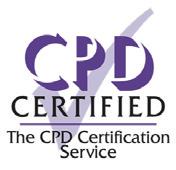

22 eLearning, compliance, and HR management, all under a single login. Trusted by over 5,000 providers and a ¼ of a million trainees. “The platform itself is outstanding in the services and reporting tools it offers, but the customer service is what makes me recommend Blue Stream to others in the care sector; in my experience it is unmatched” System Administrator Newcastle upon Tyne Care Provider Book a demo today! Fully integrated HR System Exclusive Discussion Forum for BSA trainees Established Management of Information System (MIS) 120+ CPD-certified eLearning modules 01773 822549 nch@bluestreamacademy.com LiveChat at bluestreamacademy.com
Dr Toni Hazell GP, Freelance Medical Writer, Blogger and Editor
Toni is a GP in North London and works for the Royal College of General Practitioners (RCGP) as an eLearning fellow, writing and editing eLearning. She also does similar work for a variety of other organisations and is a regular presenter and chair at GP educational events.

Her blog can be found online at www.tonihazell.co.uk
Flu Season: Vaccine Myths Debunked


Influenza (flu) is an acute respiratory illness caused by a virus. During the flu season (in the winter months), flu vaccination is offered on the NHS. This year it is being offered to all those aged over 50, as well as younger adults who have medical conditions, and some children.
We use various things to mark the passage of time – for many GPs, the annual f lu vaccination season is a rite of passage. Vaccination against flu has been available since the 1960s, with the vaccine being offered to children from 201314 onwards. Each practice does things differently – at my practice, we do an annual Saturday morning in September in which we vaccinate several hundred people; it has become quite the social event for some of our patients!
However, you are likely to come up against the same issues time and time again, so I’ll now try and bust some myths about f lu vaccination.
Can the Influenza and COVID-19 Booster Vaccines be Administered Together?
Vaccination has been on our minds since the COVID-19 pandemic – who would have thought that the public would take such an interest in the brand of a vaccine being offered to them? With the over 50s being offered both a COVID-19 booster and a f lu vaccine this winter, the question of co-administration is bound to come up.
At the start of the COVID-19 vaccine programme, it was advised not to give the two vaccines together, but that was precautionary rather than based on any solid evidence.
We now know that this is safe[3] and the Green Book[4] (the goto reference for any vaccination questions in the UK) says that inactivated inf luenza vaccines can be given at the same time as other vaccines.
www.bluestreamacademy.com 13
Continued on Page 14
However, this should ideally be in different limbs, but at a push in the same limb, at least 2.5cm apart. All f lu vaccines offered to adults in the UK are inactivated. The live attenuated inf luenza vaccine (LAIV) offered to children can also be given at the same time as other live or inactivated vaccines[4]

Are there any Exceptions to this?
The only exception for this is when patients who are being given an adjuvanted f lu vaccine (generally offered to those aged 65 or over) also want to have their shingles vaccine on the same day and are being offered the Shingrix brand. There is an absence of data and so the Green Book[4] advises that, if possible, these two vaccines be separated by at least seven days[5]
This isn’t an issue for other brands of shingles, or for non-adjuvanted f lu vaccines. However, if there is a risk that the gap will lead to the patient being lost to follow-up, or a need for rapid protection, we can consider co-administration.
What are the Cultural and Religious Considerations?
The UK is a very multicultural nation and those of us who work in areas with large communities of different religions, particularly in areas of orthodox observance, will be used to Jewish and Muslim patients asking for an alternative to LAIV for their children, on the grounds that LAIV contains porcine gelatine.
The reality is that porcine gelatine is used as a stabiliser in the manufacturing process for LAIV. During manufacture it is broken down to such an extent that no porcine DNA can be detected in the actual vaccine[6]. Many patients will be happy for their child to have LAIV (which produces higher immunity in children than the injectable vaccine, as well as not needing a painful injection).

It is particularly helpful if you can back up your advice with patient-friendly information such as that available from the Muslim Council of Britain[7], the Kashrus, Medicines Information Service[8], and Public Health England[9].
For those parents who are still unhappy with LAIV, the position has changed over the years – previously we could only offer those in an at-risk group an injectable vaccine, whereas those being vaccinated due to age alone had to rely on herd immunity.
This year it is fine to offer an injectable vaccine as an alternative, usually the cell-based quadrivalent inf luenza vaccine (QIVc).

14
Continued from Page 13
Parents may also be concerned that their child will ‘shed’ f lu after their live vaccine and that this might be dangerous for an immunocompromised household member. The risks of shedding are a key tenet of the anti-vaccine movement and are usually overemphasised.

The Green Book[4] advises that there have been no reported cases of illness among such contacts of newly vaccinated children in the United States (where LAIV is widely used) and that these children can have the LAIV like their peers.
They sound only the slightest note of caution where the household member is severely immunocompromised and contact is unavoidable (using the example of someone in isolation following a bone marrow transplant), in which case it may be pragmatic to offer an inactivated injectable vaccine instead.
How does the Influenza Vaccine Impact those with Egg Allergies?
Finally, another common misconception of f lu vaccines – “I can’t have it, doctor, I’m allergic to eggs”. Some f lu vaccines are cultured in a solution containing egg, but the QIVc and recombinant quadrivalent inf luenza vaccine (QIVr) are egg-free, and most of the egg-grown quadrivalent inf luenza vaccines (QIVe) have very low amounts of ovalbumin[10]
Those with an egg allergy can largely be offered vaccination in primary care, the exceptions being
the cohort of children who have been admitted to intensive care due to their egg allergy – they should be given LAIV in a hospital setting, due to limited data. Adults in the same situation should be offered an eggfree vaccine in primary care, or, if this is not available, referred to a specialist with a view to hospital vaccination[4]

Before we know it, the f irst six months of 2023 will have f lown past and we will be contemplating another f lu vaccination season, as time marches on
https://assets.publishing.service.gov.uk/government/uploads/system/uploads/attachment_data/file/1068455/UKHSA-2022-ovalalbumin-table-2022-2023.pdf
www.bluestreamacademy.com 15
Can the Vaccine cause Influenza to be Passed to Others?
1. NICE CKS. Immunizations – seasonal influenza. 2022. https://cks.nice.org.uk/topics/immunizations-seasonal-influenza/ 2. De Lusignan S, Correa A, Ellis J et al. Influenza vaccination: in the UK and across Europe. BJGP 2016; 66(650): 452 – 3 3. Lacobucci G. Covid and flu: what do the numbers tell us about morbidity and deaths? BMJ. 2021 Oct 14;375:n2514 4. UK Health Security Agency. Influenza: The Green Book, chapter 19. 2022. https://www.gov.uk/government/publications/influenza-the-green-book-chapter-19 5. UK Health Security Agency. The Green Book. Shingles. 2021. https://assets.publishing.service.gov.uk/government/uploads/system/uploads/attachment_data/file/1012943/Green_book_of_immunisation_28a_Shingles.pdf 6. Vaccine knowledge project. Gelatine in vaccines. 2021. https://vk.ovg.ox.ac.uk/vk/gelatine 7. Muslim Council of
Position on flu vaccines.
and medicine information service. Letter
vaccines with
Britain.
2019. https://mcb.org.uk/mcb-updates/position-on-flu-vaccines 8. Kashrus
about
a porcine element. 2020. https://www.hackneyandcityhealthvisiting.nhs.uk/content/uploads/Vaccine-letter-from-Rabbi-Adler.pdf 9. Public Health England. The children’s flu vaccination programme, the nasal flu vaccine Fluenz and porcine gelatine Your questions answered. https://www.falknerhouse.co.uk/brechin-place/wp-content/uploads/2016/11/QA-Porcine-Gelatine-Content.pdf
10. All influenza vaccines marketed in the UK for the 2022 to 2023 season. April 2022.
Bowler Marketing & Media Manager at Blue Stream Academy
Abi has managed Blue Stream Academy’s (BSA) Events and Marketing department for six years, ensuring that health and care professionals (HCPs) throughout the UK are aware of BSA’s training, resources, and workforce planning solutions. From event attendance to digital communications, Abi is passionate about promoting accessible educational resources and compliance support for busy HCPs, anywhere, anytime.

Finding Joy in Everyday Living This Winter
As December arrives, it brings darker mornings and evenings, colder weather and, for many, more time indoors. The dwindling sunlight in the UK and the narrowing of outdoor evening options can be disheartening, but with the inevitable lack of control over our winter environment, what can we do to stay upbeat?
Hygge: A History
With a maximum of 7 hours of daylight during the winter months,[1] Danish residents are well accustomed to maintaining positivity despite the lack of sunshine. Since around 1800,[2] people in Denmark have been known to practise ‘hygge’ to look after their mental wellbeing throughout the seasons.
Pronounced “hyoo-guh”, the Danish word translates roughly as “a quality of cosiness – feeling warm, comfortable and safe”.[3] But the concept covers a wider spectrum of atmospheres and feelings than this translation may suggest.
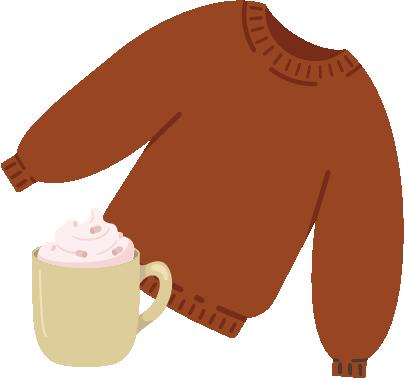
What Is Hygge?
Hygge is widely recognised as the feeling of warmth you can get by creating a cosy atmosphere, spending quality time with good company, or finding joy in everyday moments. Have you enjoyed a relaxed night at home playing games with friends, or a warm drink with a good book while it’s cold or wet outside? That feeling of contentment and inner warmth is ‘hygge’.
The festive period is the peak of hygge – twinkling fairy lights on a cold winter’s evening, hearty festive recipes, and longer periods of time in the company of our loved ones.
As the festive period gives way to the cold, dark weather that starts the New Year, many of us will feel the need for a little more warmth in our lives. So, we’ve pulled together some top tips for enjoying a ‘hygge’ winter!

16
Abi
1. iExplore. Denmark – Weather. (no date). www.iexplore.com/articles/travel-guides/europe/denmark/weather#:~:text=The%20sun%20 can%20arrive%20as,see%20seven%20hours%20of%20sunlight (Last accessed October 2022) 2. Denmark.dk. What Do We Mean by ‘Hygge’? (no date). https://denmark.dk/people-and-culture/hygge (Last accessed October 2022) 3. Cambridge Dictionary. Hygge. (no date). https://dictionary.cambridge.org/dictionary/english/hygge (Last accessed October 2022)
Wrap Up and Head Outside
The warmth provided by layers of cosy woollen clothes and the chill of the fresh air against your bare face creates a feeling like no other. Wrap up warm, head outdoors and absorb the changes in the seasons, nature’s colours and festive decorations.

Spend Time Together
Spending time casually with family and friends can provide a feeling of comfort and safety, with affection and compassion producing that warm ‘fuzzy’ feeling. Make time for those closest to you, and take in those ‘ordinary’ moments of contentment and cosiness.
Create a Hygge Home
You’ll probably be spending more time indoors over the winter, so look at your surroundings. Do you have a corner in your home where you can wind down and relax? From removing technological distractions to adding soft lighting and cosy furnishings, there are many ways to build your hygge home space.




Hygge Throughout the Year
Celebrate the Small and Discuss the Deep Sharing pride and satisfaction in everyday achievements produces inner warmth, while talking about deeper, more consuming matters can help to alleviate stress and make you feel safe.
Although hygge might feel more appropriate when it’s cold outside and the feeling of cosiness comes easier, it’s a common misconception that hygge is limited to the autumn and winter months. Spring and summertime hygge are enriched with the sensations of fresh, blooming flowers, alfresco dining and vibrant sunrises and sunsets. So, why not keep things hygge beyond this winter and make the most of all the joys that spring has to offer?
www.bluestreamacademy.com 17
Eco-Friendly Festivities
Article | Alex Burnell, Content Developer
The festive season is synonymous with exuberance and excess, but a little decadence doesn’t have to be at the expense of the environment. Here are some top tips for having a joyful, green December.

1. Rent a Tree
Let’s start at the root: a real tree is more eco-friendly than an artificial one. Real trees have a lower carbon footprint and are far more sustainable. Nonetheless, 7 million real trees are purchased every year for the festive period, and most of them are sent to landfill just a few weeks later.[1]
Renting a tree is becoming an ever more popular choice. Some tree rental services let you rent the same tree every year, and you can even give it a name if you like! Eventually, your tree can be recycled into chippings for local parks or woodland areas or used as a habitat for birds and insects. Sprucing up your living room with a rented tree saves pollution, greenhouse gas emissions and waste. If you already have a fake tree, keep using it for as long as possible to negate its environmental impact. Depending on the tree, you’ll need to us it for 10–20 years for it to be a ‘greener’ option.[2]
2. Get Crafty With Decorations
Rather than buying new decorations made from plastic or PVC, why not create your own? Home-made decorations have a special charm, and making them alongside friends and family can spark some festive cheer on a grey December day. Try upcycling old decorations that are on their last legs, or start from scratch using materials you have at home. You could make some decorations that won’t need to be thrown away, such as chocolates to hang on the tree or natural candles for your table.
3. Switch to Energy-saving Festive Lights
If every UK household swapped their festive lights with the LED equivalent, over the ’12 days’, the country would save more than 29,000 tonnes of CO2 emissions and £11 million in energy costs.[3] LED lights look pretty, contain no toxic substances, use 80% less energy and are 100% recyclable.[4]
Solar-powered lights are great for outside. Just make sure that they’re waterproof – and that the charging panel doesn’t get covered with snow!
18
4. Be Creative With Your Season’s Greetings
Each year, over 1 billion greetings cards are binned in the UK.[5] To show friends and family they’re in your thoughts, you could send them an e-card, write an email, phone them or have a video call instead.
If you like the tradition of sending cards, you could choose designs that are printed on recycled paper, approved by the Forest Stewardship Council, and recyclable or compostable. You can even send cards infused with wildflower seeds, which your friends can plant for the bees and butterflies to enjoy.
5. Think Outside the (Gift) Box
Gifts are tricky enough to choose, and that’s before you put much thought into their environmental credentials. It can be more eco-friendly to buy experiences instead of ‘things’, such as an escape room game or a pottery experience. You could also create handmade gifts or purchase presents from local organisations or people.

Shiny and glittery wrapping paper isn’t recyclable, but you could use brown paper for an eco-friendly alternative that has a vintage look. The same goes for ordinary sticky tape, as it is plastic. Plant-based tape, or ribbon or string, is more environmentally friendly.

6. Go Crackers
Crackers are a tradition that we don’t want to pull up on. Unfortunately, many are filled with plastic and imported toys that end up in the bin or on the floor before the meal is even over. However, more sustainable options are starting to appear in the shops.

A set of reusable crackers could be a great alternative. Writing your own jokes and filling the crackers with relevant gifts for specific people adds another festive touch.
7. Give the Menu Some Food for Thought
It’s no coincidence that the traditional vegetables that go into festive dinners are seasonal, and buying these locally also means fewer food miles and natural ripening methods. Planning your meals can leave you with less food waste (and better off financially), but if you do end up with leftovers you could add them to curries and soups – or encourage guests to take food home.
Festive meals can be heavy on meat and dairy too. Turkey has a lower carbon footprint than other meat and poultry, but it still needs huge amounts of energy. Poor management of manure and carcasses can pollute soil and water. To add variety, you could include more plant-based meals in your festive menu
Do you have any top tips to keep your festivities eco-conscious? Head over to the Blue Voice Discussion Forum by logging in to your Blue Stream Academy training dashboard and selecting ‘Forum’, to share your tips with thousands of fellow health and care professionals throughout the UK.
www.bluestreamacademy.com 19
1. The University of Sheffield. (2018). Pine Needles from Old Christmas Trees Could Be Turned into Paint and Food Sweeteners in the Future. 27 December. www.sheffield.ac.uk/news/nr/pine-needles-christmas-trees-1.822340 (Last accessed October 2022) 2. Zraick K. (2018). Real vs. Artificial Christmas Trees: Which Is the Greener Choice? The New York Times, 26 November. www.nytimes.com/2018/11/26/business/energy-environment/fake-christmas-tree-vs-real-tree.html (Last accessed October 2022) 3. 18 Ways to Have a Green, Eco-friendly Christmas. (2021). Country Living, 2 November. www.countryliving.com/uk/homes-interiors/interiors/g25329535/eco-friendly-christmas-ideas-green-christmas (Last accessed October 2022) 4. Energy Saving Trust: Lighting. (no date). https://energysavingtrust.org.uk/advice/lighting (Last accessed October 2022) 5. Dobson M. Christmas Packaging Facts: The Definitive List (Updated for 2022). GWP Group, October 2022. www.gwp.co.uk/guides/christmas-packaging-facts/ (Last accessed October 2022)
Stuart Walsh Chief Information Security Officer at Blue Stream Academy

As the Chief Information Security Officer (CISO) for Blue Stream Academy, Stuart provides an article for each issue of BSA Today to highlight how we strongly believe that promoting better information security practices improves the threat landscape for all organisations that work alongside us.

Cover Your Assets
Identifying and managing the assets in an organisation is important for effective information security. Good asset management can allow organisations to avoid security incidents by providing opportunities to undertake remedial actions before incidents have the potential to develop.
What is an Asset?

An asset is anything that provides value to an organisation. Examples include customer data, intellectual property, technology, physical locations, financial capital and people.
In the context of cyber security, it’s important to focus on assets in the organisation that:
• Must be configured or managed to achieve security outcomes.
• Could be affected by a cyber incident.
Shadow IT
‘Shadow IT’ refers to the information technology assets (such as personal mobile phones, tablets, USB drives) that an organisation uses for business purposes but are not accounted for as part of the processes for managing assets and risks or corporate IT processes. These devices are concerning because they are unlikely to align with the organisation’s security or data governance policies, constituting an unknown risk.
Why Is Asset Management Important for Cyber Security?

Good asset management involves identifying and maintaining accurate information about an organisation’s assets. This information provides the basis for many other essential cyber security processes, including:
Managing risk Understanding and managing cyber risk depends on assets being accounted for. If assets are allowed to slip under the radar, it will not be apparent if appropriate security controls are missing, resulting in unmanaged risks.
Managing legacy (outdated) technologies
All software and hardware eventually becomes out of date. Continuing to use products beyond that point involves increased risk, or increased costs to mitigate those risks. Asset management can help organisations identify when systems will reach end of support and plan ahead.
20
Managing identity and access
Being able to identify users and devices is necessary in order to implement an effective identity and access management system. Asset management can help ensure all users and devices have unique identities and can also help identify resources that need access controls applied.

Managing and patching (fixing)
vulnerabilities
One of the best defences possible for cyber systems is ensuring they don’t contain known vulnerabilities as these are easy attack points. Having accurate information on hardware and software assets provides the basis for ensuring available updates are applied and knowing where to scan for vulnerabilities.
Monitoring
Some threats cannot be prevented, so it’s important that you have the ability to detect and investigate potential compromises, subsequently mitigating any threats. An effective monitoring capability depends on having access to the right data. Asset management can help you identify relevant data sources and enrichment information that may be needed for your monitoring capability.
Managing the organisation’s response and recovery if a security incident happens
Knowing your assets and determining which are most critical to your organisation helps you plan for, respond to, and recover from incidents. By ensuring nothing important is missed and having the right information available, you will be able to act quickly and minimise disruption.
Who Should Be Involved?
Asset management must be co-ordinated across the whole organisation. It isn’t just about the technology; other functions, such as procurement, also need to be involved.
That means it’s essential to get buy-in from the senior management and to make an ‘owner’ responsible for the whole asset management system. Having an owner makes it easier to co-ordinate the system and ensure that the organisation’s assets are effective.
What Should I Consider?
When designing an asset management system that promotes cyber security, consider the following:
Discovering Assets
Implement tools that scan your environment for new, modified or removed assets on a regular or continuous basis.
Maintaining an Authoritative Source of Information
Maintain an accurate, up-to-date record of assets that reflects the environment. Consider normalising and consolidating asset information to avoid duplication and make it more accessible.
Making Asset Information Available
Ensure that asset information is available to the people in your organisation who need to use it.
Accounting for Human Factors
The asset management process should accommodate the needs of users across your organisation and account for human factors, such as usability and accessibility. You might need to take a pragmatic approach to avoid too much bureaucracy.
Ensuring Completeness
Ensure all assets are accounted for by the asset management process. This should include physical, virtual and cloud resources, along with your organisation’s Internet presence, in the form of social media accounts, domain name registrations, IP address spaces and digital certificates.
Comprehensive Visibility
Identify how your organisation will use asset information and collect sufficient details about your assets to support this use. For example, knowing the versions of all software installed on your machines helps identify a much wider range of vulnerabilities than just knowing the operating system version. If certain details are difficult or costly to capture, consider whether these could be captured less frequently, after first use or retrospectively, while putting in place other measures to reduce risk (for example, separating networks).

Continued on Page 22 www.bluestreamacademy.com 21
Detecting Changes
Ensure that changes in asset information are recorded. Use multiple data sources to identify inconsistencies; for example, a new device on the network that has not been added to device management systems.
Automating Processes
Whenever practical, use automated systems to update asset records. Ideally, these tools should record asset information in response to changes in the environment, instead of detecting changes after they’ve happened, for example, scanning to pick up changes as they happen as opposed to periodically.
Maintaining Confidentiality

Consider the sensitivity of the asset data collected. Protect data and restrict access where appropriate, but make sure the right people can access the relevant data when they need to use it.
For example, all users should be able to look up the assets they are responsible for, but arbitrary bulk queries should be prevented. Consider monitoring access to asset data for possible signs of reconnaissance, preventing inappropriate access.
Registering Information Before Use
Asset information should be collected before, or at the time of, first use. You may be able to enforce this through processes and detection capabilities.
For example, certificate identities should only be issued for registered assets, so that unregistered devices cannot join other systems.
Classifying Assets
Define categories for the organisation’s assets in alignment with your approach to risk management. For example, you could group systems based on the sensitivity of the information they process or whether they support critical business functions.

What Data Sources Should I Use?
Consider using a combination of active and passive data sources to give you full visibility of the assets in your organisation.
Active Data Sources
Examples include:
• Procurement Records
• Mobile Device Manager or System/Device Management Tools
• Logging and Monitoring Platforms
• Vulnerability Management Platforms
• Manual Entry
• Information from Development and Engineering Teams
• Public Key Infrastructure
Continued from Page 21 22
Ideally, you should use active scanning techniques. If active scanning is an issue, such as when there are difficulties in detecting new assets, network limitations or where there is potential device instability, use passive scanning tools.
Passive Data Sources
Passive data sources can provide extra visibility by looking for side effects, which could include network sources (DNS and DHCP logs or traffic captures) or application access and authentication logs, which may identify devices attempting to communicate with other systems, instead of interrogating assets directly.
Passive sources will not generate as much detail as active sources but can used to validate existing asset data or detect changes in the environment.
How Can I Validate an Asset Management System?
Validating your asset management process can give you the confidence that you aren’t inadvertently overlooking any assets.

Consider whether assets could be added or changed without being detected. For example, if a user connected a new laptop to your network, would you be able to detect it and its configuration? Or, if a new piece of software was installed on a device, would it be check for vulnerabilities?
To validate your asset management process, you can also:
• Include the identification, addition and modification of devices within the scope of penetration tests (authorised simulated attacks performed on computer systems to evaluate security).

• Look for anomalies in log data, such as network traffic from unidentified devices.
• Identify ‘stale asset’ records. These may indicate that a device hasn’t been updated or has been repurposed.

• Reconcile procurement records and cloud billing with asset records to identify assets that have been purchased, but not captured by the asset management process
This information is licensed under the Open Government Licence v3.0. To view this licence, visit www.nationalarchives.gov.uk/doc/open-government-licence.
© National Cyber Security Centre 2022
Source: www.ncsc.gov.uk/guidance/asset-management
www.bluestreamacademy.com 23
Bethany Cooper Health Sciences/Medical Writer & Emergency Nurse
Bethany completed a master’s degree in trauma science in 2019, research from which has recently been accepted for publication in a medical journal. Over the past year

Bethany has been working as a health sciences and medical writer. She is passionate about health and encouraging health literacy and patient engagement.
Wellness Workshop: The ‘Sunshine Vitamin’
In the summer months, we should be able to make all the vitamin D that we need from sunlight. However, with the days getting shorter and the nights growing longer, it’s a bit harder to come by. This means we need to be more conscious about getting our vitamin D from other sources.
Vitamin D is one of 24 micronutrients that are critical for human survival.[1] Its main function is to help the body absorb calcium: one of the most important minerals for bone strength.[2] Not only is vitamin D vital for bone health, but it also plays an important role in the immune system, specifically in reducing inflammation, modulating cell growth, aiding neuromuscular and immune function, and metabolising glucose.[3]
Alongside its main physiological functions throughout the body, vitamin D has been linked to the reduction of cancer cell growth,[4,5] attesting to its multi-system importance for our health and wellbeing.
Where Do We Get Vitamin D?

We can get vitamin D through our diet, including from fatty fish, fish liver oil, egg yolk, and fortified foods, such as milks

and cereals. Nicknamed the ‘sunshine vitamin’ due to its synthesis in the skin upon exposure to ultraviolet (UV) rays, vitamin D could be considered an easy fix, given its availability through so many natural sources. However, vitamin D deficiency is one of the most common nutrient deficiencies, affecting an estimated 1 billion people globally.[6,7]
Recommended Levels and Risk Factors
According to the National Institutes of Health (NIH), the recommended average daily intake of vitamin D is 400–800 IU, or 10–20 micrograms.[8] However, the amount of vitamin D a person requires is dependent on numerous factors, including age, ethnicity, geographical location, food availability, latitude, sun exposure and even the season, all of which can affect our vitamin D uptake.
Profound vitamin D deficiency is mostly prevalent among babies and children, women who are pregnant or breastfeeding, older
24
people, people with limited exposure to sunshine, and people with darker skin,[9] with vitamin D deficiency especially common in the developing world.[10] Other populations at risk of deficiency are people in hospital, people with chronic kidney or liver disease, and people with malabsorption syndromes – difficulty with digesting or absorbing nutrients.[11]
Deficiency Complications
Vitamin D deficiency is linked to muscle weakness, loss of bone density and an increased risk of fractures.[12] It is also linked to severe complications including several cancers, cardiovascular disease, type 1 diabetes, multiple sclerosis, rheumatoid arthritis, Parkinson’s disease, high blood pressure and thyroid problems.[13,14,15]
Alongside the physical effects, links to a psychological impact have been noted by researchers. For example, a study by Anglin et al. found that a low concentration of vitamin D is associated with an increased risk of depression.[16]
Symptoms and Diagnosis
Given the vast adverse effects of a deficiency of our sunshine vitamin, it is especially important to improve awareness and recognition of the signs and symptoms.
For children, vitamin D deficiency may be easier to spot, as it can lead to rickets – a condition that affects bone development and causes bone pain, poor growth and weak bones.[17] In adults, the symptoms of vitamin D deficiency can be less obvious, and some people may be asymptomatic. However, when it is chronic, even mild vitamin D deficiency can contribute to an increased risk of osteoporosis, falls and fractures.
Other common symptoms of deficiency may be similar to those of other diagnoses, such as recurrent infections or illnesses, fatigue and muscle
weakness, bone and joint pain, common fractures and changes in mood. As it is not recommended to screen asymptomatic individuals for vitamin D deficiency, it is vital for clinicians to take a comprehensive history during the assessment. To confirm the diagnosis, this history can be complemented with a simple blood test to evaluate serum 25-hydroxyvitamin D - the primary circulating form of vitamin D.[18]
Treatment and Global Initiatives
Treatment focuses on preventing and managing deficiency. The amount of supplementary vitamin D required to treat the condition depends on the degree of the deficiency and the underlying risk factors. Treatment usually includes a higher loading dose of vitamin D supplements for around 8 weeks, followed by a maintenance dose once the person’s levels have normalised.[19] These levels should be continually and closely monitored.
The testing of vitamin D levels has increased exponentially in recent years as the deficiency has become more apparent globally.[20] The focus on vitamin D deficiency as a public health concern has resulted in numerous initiatives, including:
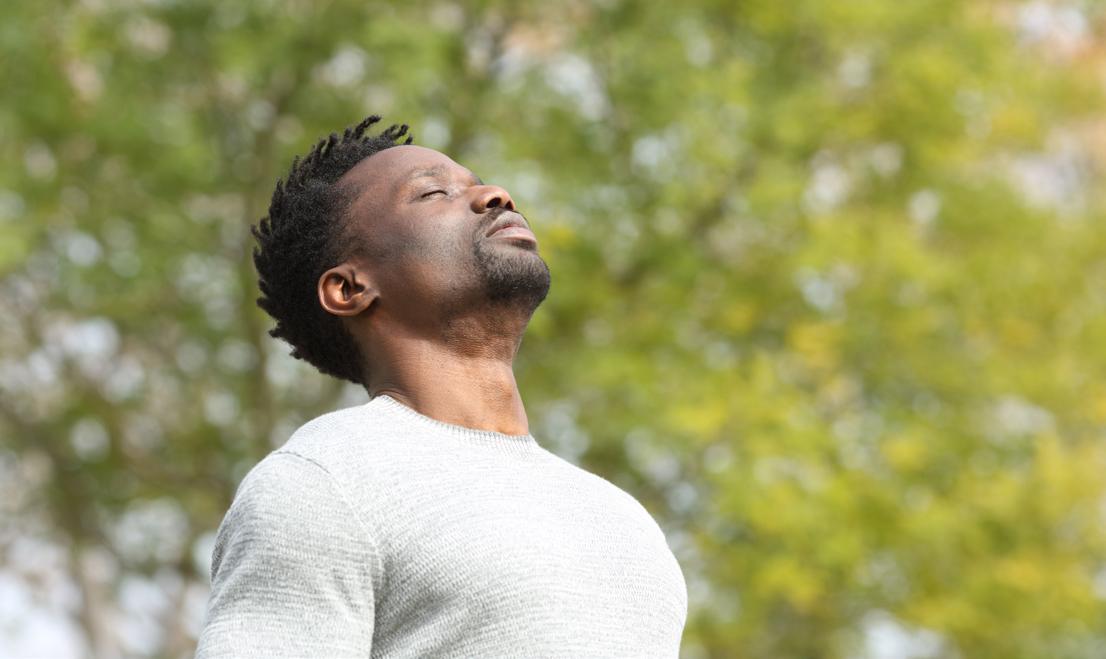

• More screening for vitamin D deficiency in asymptomatic high-risk individuals.
• Supplementing vitamin D in certain high-risk groups, such as young children and pregnant or breastfeeding women.
• Systematically fortifying food with vitamin D.[21]
Each public health initiative seeks to improve awareness of and responses to this global health concern, but there is still a long way to go to combat the global effects. Given the importance of vitamin D and the ill effects of deficiency, it is vital that we continue to raise awareness and understanding of our sunshine vitamin amongst the public and professionals
www.bluestreamacademy.com 25
1. Bendik I, Friedel A, Roos FF, et al. Vitamin D: A Critical and Essential Micronutrient for Human Health. Front Physiol 2014; 5:248. https://doi.org/10.3389/fphys.2014.00248 2. Berridge MJ. Calcium Signalling Remodelling and Disease. Biochem. Soc. Trans 2012; 40:297–309. https://doi.org/10.1042/BST20110766 3. Norman AW, Henry HH. Vitamin D. In: Erdman JW, Macdonald IA, Zeisel SH, eds. Present Knowledge in Nutrition 10th ed. Washington, DC: WileyBlackwell, 2012, 199–213. 4. Moukayed M, Grant WB. Molecular Link Between Vitamin D and Cancer Prevention. Nutrients 2013; 5(10):3993–4021. https://doi.org/10.3390/nu5103993 5. Fleet JC, DeSmet M, Johnson R, Li Y. Vitamin D and Cancer: A Review of Molecular Mechanisms. Biochem J 2012; 441(1):61–76. https://doi.org/10.1042/BJ20110744 6. Palacios C, Gonzalez L. Is Vitamin D Deficiency a Major Global Public Health Problem? J Steroid Biochem Mol Biol 2013; 144 Pt A:138–45. https://doi.org/10.1016/j.jsbmb.2013.11.003 7. Wahl DA, Cooper C, Ebeling PR, et al. A Global Representation of Vitamin D Status in Healthy Populations. Arch. Osteoporos 2012; 7(1–2):155–72. 8. National Institutes of Health (NIH). Vitamin D: Fact Sheet for Consumers. https://ods.od.nih.gov/factsheets/VitaminD-Consumer (Last accessed October 2022) 9. Patience S. Vitamin D deficiency in at-risk groups. Community Pract 2013; 86(3):38–40. PMID: 23540018 10. Biesalski HK. Hidden Hunger in the Developed World. In: Eggersdorfer M, Kraemer K, Ruel M et al., eds. The Road to Good Nutrition: A Global Perspective. Basel: Karger, 2013, 39–50. 11. Kennel KA, Drake MT, Hurley DL. Vitamin D Deficiency in Adults: When to Test and How to Treat. Mayo Clin Proc 2010; 85(8):752–7. 12. Lips P, van Schoor NM. The Effect of Vitamin D on Bone and Osteoporosis. Best Pract Res Clin Endocrinol Meta 2011; 25(4):585–91. doi: https://doi.org/10.1016/j.beem.2011.05.002 13. Zhang R, Naughton DP. Vitamin D in Health and Disease: Current Perspectives. Nutr J 2010; 9, 65. https://doi.org/10.1186/1475-2891-9-65 14. Nair R, Maseeh A. Vitamin D: The Sunshine Vitamin. J PharmacolPharmacother 2012; 3(2):118–26. https://doi.org/10.4103/0976-500X.95506 15. Holick MF. Vitamin D Deficiency. New Engl J Med 2007; 357(3):266–81. https://doi.org/10.1056/NEJMra070553 16. Anglin RES, Samaan Z., Walter SD, McDonald SD. Vitamin D Deficiency and Depression in Adults: Systematic Review and Meta-analysis. Brit J Psychiat 2013; 202:100–7. 17. Sahay M, Sahay R. Rickets: Vitamin D Deficiency and Dependency. Indian J Endocrinol Metab 2012; 16(2):164–76. https://doi.org/10.4103/2230-8210.93732 18. Sizar O, Khare S, Goyal A, Gilver A. (2022) Vitamin D Deficiency. https://www.ncbi.nlm.nih.gov/books/NBK532266 (Last accessed October 2022) 19. Bordelon P, Ghetu MV, Langan RC. Recognition and Management of Vitamin D Deficiency. Am Fam Physician 2009; 15;80(8):841–6. Erratum in: Am Fam Physician 15;80(12):1357. 20. Amrein K, Scherkl M, Hoffmann M, et al. Vitamin D Deficiency 2.0: An Update on the Current Status Worldwide. Eur J Clin Nutr 2020; 74:1498–1513. https://doi.org/10.1038/s41430-020-0558-y 21. Moy, RJ., McGee, E., Debelle, GD., Mather, I., and Shaw, NJ. (2012) Successful public health action to reduce the incidence of symptomatic vitamin D deficiency. Arch Dis Child; 97(11):952-4. doi: 10.1136/archdischild-2012-302287.
Emojis: What Are We Really Saying?
 Article | Brady Braddock, BSA Today Editor
Article | Brady Braddock, BSA Today Editor
Have you ever sent a text message that you instantly regretted? How about using the right words, but with an emoji that you didn’t mean to add? Don’t worry, you’re not alone.
An emoji has the power to completely alter the tone of a text or conversation. Most of the time, this is perfectly harmless – but some emojis have very interesting double meanings. First off, let’s address the elephant in the room. When I discussed the idea of including an article on this topic, it was met with amusement by some: “You can’t discuss hidden emoji meanings without talking about the aubergine or the peach!” – well here you are. Moving swiftly on, we present a selection of emojis and ask: What are we really saying?

Pretzel
A savoury treat, popular throughout Europe and beyond, this emoji has another meaning too, “don’t get it twisted” – a phrase that means to get something wrong or to draw a wrong conclusion.
Upside-Down Face

This classic emoji was created to show silliness, but it also implies sarcasm or irony – the cornerstone of a healthy sense of humour.


Octopus


This cute little creature has an even cuter double meaning – the octopus is used to represent cuddles, and who doesn’t love a good cuddle?
Puff of Smoke
The ‘puff of smoke’ emoji is traditionally used to demonstrate a fast pace or dashing away, but now – especially among younger people – it’s used to represent vaping.
Goat

This animal emoji has an inspiring double meaning – the acronym GOAT stands for ‘greatest of all time’ and it’s used to represent excellence.
Snake
We hope you haven’t yet had to learn the double meaning of this emoji. As well as depicting a slithering reptile, it represents betrayal by a backstabber – or a ‘snake’.
Nail Polish
A favourite with beauticians, the ‘nail polish’ emoji can also be used to show disdain or nonchalance. It’s the equivalent of replying with a dismissive “Whatever”.
There are hundreds of emojis at our fingertips, and they are all open to (mis)interpretation. So, before you add that emoji to your next text or tweet, make sure you do your homework – at the very least, it could prevent a few awkward interactions
26
Key Awareness Days

World AIDS Day

1 December www.worldaidsday.org
An international day for people to unite in the fight against HIV, show support for those living with it and commemorate those who have died from AIDS-related illness.
National Grief Awareness Week


2 – 8 December www.thegoodgrieftrust.org/ngaw Organised by the Good Grief Trust, this special week aims to raise awareness of the impact of grief and to create a unified voice for all bereavement support services.
International Day of People with Disabilities

3 December www.idpwd.org
This observance promotes an understanding of a disability issues and mobilises support for the dignity and rights of people with disabilities.

International Volunteers Day
5 December www.www.unv.org/node/38236
The theme for International Volunteer Day (IVD) 2022 is solidarity through volunteering, not solidarity in standing alone, but solidarity with each other.

Human Rights Day
10 December www.ohchr.org/en/about_us/human_rights_day Held on 10 December each year, Human Rights Day is acknowledged internationally to commemorate the 1948 day when the United Nations General Assembly adopted the Universal Declaration of Human Rights.
Christmas Jumper Day
11 December www.savethechildren.org.uk/christmas-jumper-day Established in 2012 by Save the Children, Christmas Jumper Day is a UK-wide event that raises money for children around the world, with participants digging out their jazziest festive jumpers on a dedicated day each December!
www.bluestreamacademy.com 21
Ingredients
• 115g unsalted butter
• 150g light brown soft sugar
• 150g golden syrup
• 340g plain flour
Nutritional Values per Serving

•
•
•
• Icing pens (to decorate)
Food, Glorious Food!
Food is at its most glorious at this time of year, bringing warmth and cosiness while it’s chilly outside. We’ve come up with two tasty festive bakes that are perfect for indulging in with friends and family. You could even use our gingerbread stars recipe to make some eco-conscious edible decorations!

Gingerbread Stars
Makes 30 Time 1 hour 30 min
Directions


1. Add the butter, sugar and golden syrup to a pan and heat on a medium heat until you have a smooth mixture. Remove from the heat and leave for 10 minutes.

2. Sift the flour into a large mixing bowl and add the ginger, cinnamon and bicarbonate of soda. Make a well in the centre, pour in the cooled mixture and stir to combine. Knead to create a soft, smooth dough. Wrap the dough in cling film and let it chill in the fridge for 20 minutes.

3. Line 3 baking sheets with baking parchment. Unwrap the chilled dough, place on a lightly floured surface and roll to a thickness of 4mm. Use star-shaped cutters, placing the stars on the baking parchment. Re-roll and cut the dough until you have about 30 stars. Let the shapes chill in the fridge for 30 minutes.

4. Pre-heat the oven to 190°C (conventional), 170°C (fan) or gas mark 5. Bake the stars for 12 minutes and leave on the baking sheets to cool for 10 minutes. Transfer the biscuits to a wire rack to cool completely.
5. Decorate your gingerbread stars with icing pens and leave to set. Enjoy with a cup of tea, coffee or hot chocolate!
3 tsp ground ginger
1 tsp ground cinnamon
2 tsp bicarbonate of soda
28 1 2 3 4
Camembert, Rosemary, and Cranberry Bake

Directions
To make the dough
1. Warm the milk on a low heat. Pour 75 ml of the milk into a large mixing bowl, add the yeast and sugar and stir until it dissolves.
2. Add the flour, salt, butter, half the beaten eggs, and the rest of the warmed milk. Combine to form a dough.
3. Tip the dough onto a floured surface. Knead it by hand for 10 minutes or until it becomes elastic and smooth.
4. Place the dough back in the bowl, cover with a fresh tea towel and leave in a warm place to rise (allow 45 minutes to 1 hour).
To assemble the bake
1. Once the dough has risen, gently knead it to remove any air. Then divide it into 4 equal balls. Roll out each of the balls into the shape and size of a dinner plate, keeping the 4 pieces as equal as possible.
2. Place one piece of rolled dough on a sheet of baking paper. Spread 1 tablespoon of cranberry sauce on top and add a sprinkling of Grana Padano and chopped rosemary.
Ingredients
Serves
10 Time 1 hour 45 min
• 345ml whole milk

• 9g fast-action dried yeast
• 1.25 tsp caster sugar
• 625g strong white bread flour
• 4 tbsp cranberry sauce (plus more to serve)
• 6½ tbsp Grana Padano
• 1 whole camembert
• 3 sprigs of fresh rosemary
3. Lay another piece of dough on top and repeat step 2. Then, place the camembert on top, adding some rosemary and crushed garlic inside. Place the third piece of dough on top of the camembert and repeat step 2. Then cover with the final piece of dough.
4. Gently shape the dough around the camembert, pressing down to remove any air pockets.
• 1.25 tsp fine sea salt
• 63g unsalted butter

• 3 medium free-range eggs, beaten
• 2 cloves of crushed garlic Nutritional Values per Serving
5. Using a sharp knife, make 4 cuts from the edge of the camembert to the edge of the dough. Halve each piece to make 8 strands of dough, then halve again to make 16 strands.
6. Taking 2 strands of dough that are next to each other, twist them away from one another and press the two ends together to form a point. Do the same with the rest of the strands. Your bake will then have a star shape.
7. Brush the dough with 1 beaten egg and leave to prove in the fridge for 30–40 minutes. While you wait, heat the oven to 190°C, 170°C (fan) or gas mark 5.
8. Remove the bake from the fridge, brush with the rest of the beaten egg and bake for 30 minutes or until the dough is golden and the cheese is oozing.
9. Garnish with the rest of your Grana Padano and a few sprigs of rosemary and enjoy!
www.bluestreamacademy.com 29
The year may be coming to a close, but #TeamBSA have never been busier! Over the last few months, we’ve been back on the road to attend some fantastic events and exhibitions across the country – from Management in Practice Newcastle and Bristol to the Care Show in Birmingham and the Care Roadshow in Cardiff. It’s been a pleasure to meet so many exceptional health and care professionals!
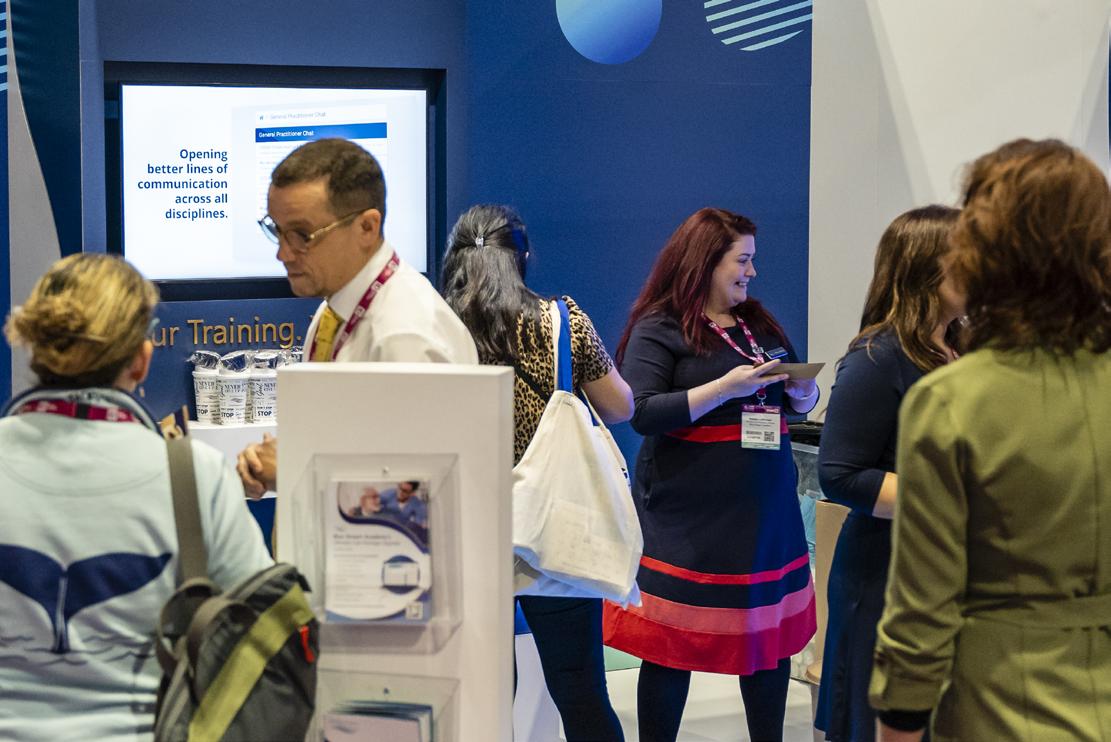


#TeamBSA
In September, #TeamBSA were busy fundraising for the Jeans for Genes campaign, as well as organising our annual Macmillan Coffee Morning. Jeans for Genes raises awareness of the daily challenges faced by those living with a genetic condition, and we sported our jeans in a range of funky styles to raise money for




Raising money and spreading laughter for Red Nose Day. Like what you see? Follow us on Twitter at @BlueStreamNews for the latest updates from #TeamBSA!




For our Macmillan Coffee Morning, we baked tasty iced biscuits, delicious flapjack, and plenty of other treats, raising over £100 for two incredible charities!

We celebrated 10 years in business this year, and we’d like to thank you all for another year of continued support.
We wish you all a fantastic festive period and a happy and healthy start to 2023.
30
@BlueStreamNews
#TeamBSA at the Care Show in Birmingham.
fundraising for the Jeans for Genes campaign.
Some of the treats on offer at our Macmillan Coffee Morning!
LiveChat Lounge
We check in with our enthusiastic support team to see what questions they’ve been answering in our LiveChat feature. Here’s one they’ve shared with us for this edition:
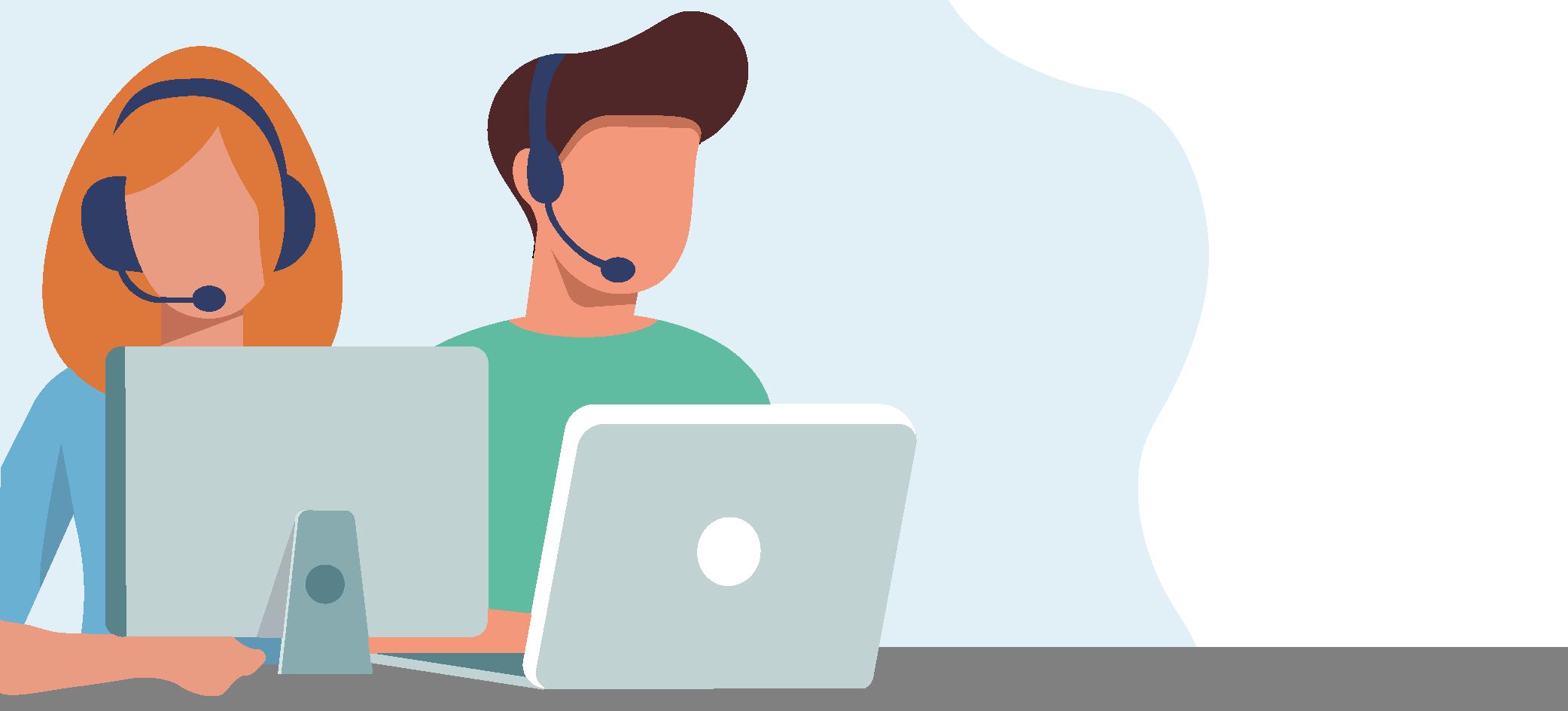

QHi Blue Stream, I’ve heard a lot about the Blue Voice forum, but I’m not sure how to find it or use it.
Thanks!

Practice Manager, West Midlands.
AHi there,
Thank you for getting in touch with us! When you log on to your Blue Stream dashboard, you can find the ‘Forum’ tab to the left of your screen, underneath the ‘Dashboard’ tab. When you click on this, you’ll have the option to set up your profile name and display photo. You can then start to browse, interact, post and comment across the different forums.
The forum hosts a ‘General Discussion’ board that’s visible for all users, where you can post questions or join the wider conversation. There’s also a forum board that’s only available to users from your organisation. On your organisation-only board, you can check in with your team and create topics relevant to your workplace.
There’s no extra cost to use the forum – it’s available as part of your current Blue Stream Academy subscription.
We hope this helps. If you need any further assistance, you can contact us by email, LiveChat or phone.
Team BSA

As part of our eco-initiative, we have made some changes to the way that you can read BSA Today.

From now on, printed magazines are only available to members of our exclusive Subscribers’ Club. It couldn’t be easier to join! Simply contact the BSA Today team on bsatoday@bluestreamacademy.com with your name and address to get our healthcare & lifestyle magazine delivered direct to your door!
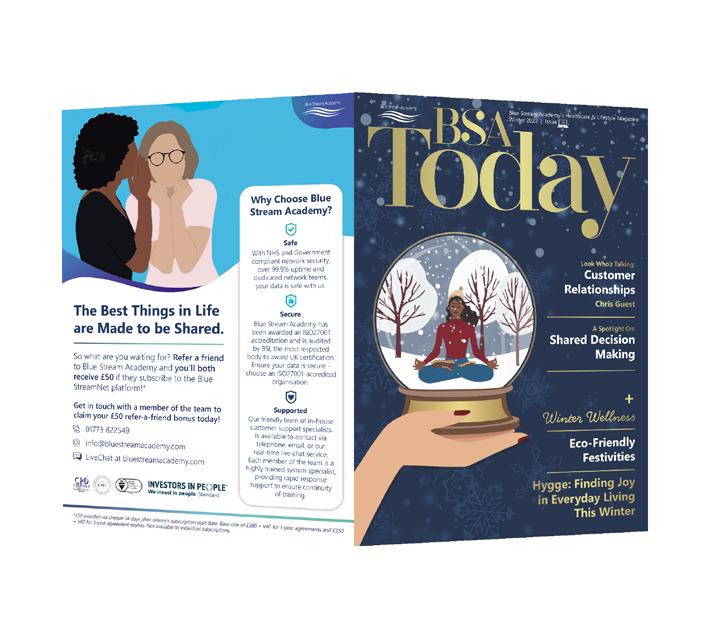
Don’t worry, if a printed copy isn’t your thing, we are also available online via Blue Stream Academy’s website and Issuu.
Best wishes, Team BSA
www.bluestreamacademy.com 31
Why Choose Blue Stream Academy?












Safe













With NHS and Government compliant network security, over 99.9% uptime and dedicated network teams, your data is safe with us. Secure Blue Stream Academy has been awarded an ISO27001 accreditation and is audited by BSI, the most respected body to award UK certification. Ensure your data is securechoose an ISO27001-accredited organisation.








Supported
Our friendly team of in-house customer support specialists is available to contact via telephone, email, or our real-time live chat service. Each member of the team is a highly trained system specialist, providing rapid response support to ensure continuity of training.
are Made to be Shared. So what are you waiting for? Refer a friend to Blue Stream Academy and you’ll both receive £50 if they subscribe to the Blue StreamNet platform!* Get in touch with a member of the team to claim your £50 refer-a-friend bonus today! 01773 822549 info@bluestreamacademy.com LiveChat at bluestreamacademy.com *£50 awarded via cheque 14-days after referee’s subscription start date. Base rate of £380 + VAT for 1-year agreements and £350 + VAT for 3-year agreement applies. Not available to individual subscriptions.
The Best Things in Life


















































































 Article | Brady Braddock, BSA Today Editor
Article | Brady Braddock, BSA Today Editor







































































